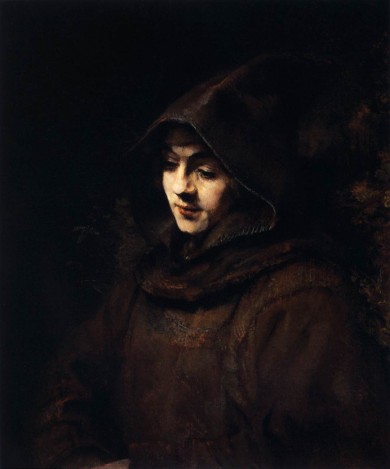Seraphic Fire offers serenity now with Chant program
Centuries before New Age gurus and twentieth-century Minimalist composers extolled the virtues of peace and meditation, monks in European monasteries, nuns in convents and larger forces in cathedrals across Central and Western Europe sang Gregorian chant. Usually part of the services at day’s end in Catholic churches, these repetitive and solemn prayers were intended to transport worshipers to higher realms beyond the earthly affairs of the day.
Seraphic Fire recreated the sounds and atmosphere of this early choral music with “Ave Maria,” a program spanning from 13th-century chants to works by composers from later centuries inspired by vocal music’s earliest roots. A full house at St. Jude Melkite Catholic Church on Wednesday night found respite from the outside traffic and Brickell Avenue bustle.
Artistic director Patrick Quigley staged the program as one continuous, uninterrupted performance in a darkened sanctuary illuminated only by candles, the choir members carrying lights on their scores. The evening began with the women entering, singing austere lines in ethereal tones. Joined by the male voices, the blended harmonies of the 13-member ensemble seemed to evoke higher realms, at once peaceful and deeply spiritual. The soft declamation of a male trio was uplifting in its simple beauty and stasis.
In major European cathedrals, these musical evocations were performed by tenors and basses with children’s voices singing the upper lines. Women only sang chant in the cloistered aura of convents. Quigley recreated a sense of that isolation with the female voices singing at one point out of sight at the church’s far sides. In one prayer, the male voices were in the rear of the sanctuary, their blended timbres emerging in the darkness seemingly from another age.
Later chants exhibited more flowing melodic lines, the voices blending in rich harmonic constellation. This timeless music continues to influence contemporary choral composers like John Rutter and Eric Whitacre while Anonymous Four is not that far removed from the austerity of women’s plainchant.
The minimalist vocal strophes of early chant were contrasted with more elaborate prayer settings and odes to the Virgin Mary by Francisco Guerrero, Josquin dez Prez, Leonel Power, John Dunstable, Orlando di Lasso and two glorious scores by Tomas Luis de Victoria. Victoria’s joyful Regina caeli laetare concluded the program on a rousing note, the repeated full-voiced alleluias resounding in the stone church’s superb acoustics. Here the mix of male and female timbres reached its zenith in a festive outpouring that never sounded harsh or constricted.
Building on the richly blended, expressive singing of the recent Psalms of David program, Quigley achieved an incandescent sonority from the singers, the purity and fervor of the voices striking in the exposed vocal lines. Achieving dynamic gradations from distant whispers to full-scale proclamations, Quigley’s control and finessed, mellow ensemble sound were a model of choral leadership.
This unique and serenely beautiful concert is a must see for lovers of choral music and for those seeking the original chant experience.
Seraphic Fire repeats Gregorian Chant – Ave Maria 7:30 p.m. Thursday at St. Gregory’s Episcopal Church in Boca Raton, Friday at First United Methodist Church in Coral Gables, Saturday at All Saints Episcopal Church in Ft. Lauderdale and 4 p.m. Sunday at Miami Beach Community Church. 305-285-9060; seraphicfire.org.
Posted in Performances
Leave a Comment
Thu Jan 17, 2013
at 12:11 pm
No Comments







